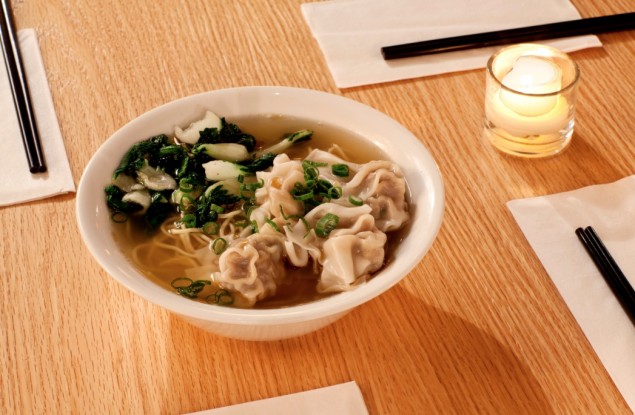
Won Ton Soup @ The Brooklyn Wok Shop Photo by Alvaro Saavedra
When it comes to Chinese food, there are a lot of urban legends. Chinese take-out restaurant chefs get a lot of trash talk from the dining public. They work seven days a week, sixteen hours a day, turning out $3.95 stir-fried veggies and $5.95 orange beef and broccoli, and all they ever get in return are complaints. My favorite one is, “I ordered from this Chinese take-out place five or six times, and I got sick every time!” What kind of idiot would keep going back to the same restaurant that made them sick over and over again?
Making fun of Chinese food has been a favorite American pastime since the dawn of time. For many decades, the running Chinese food joke was, “Am I eating dog, cat, or pork?” Then, in the health-conscious 80s (the Jane Fonda workout video era), the battle cry was changed to “Why is Chinese food so greasy?’ Really? As compared to what? Duck confit? French fries? Meatloaf? Mac & cheese? Eggplant parmigiana? Pork belly? Mashed potatoes made with a stick of butter? Nervous Chinese immigrant chefs responded by offering steamed vegetables, brown rice, and sauce on the side. Now, thirty years later, people are still ordering General Tso chicken (deep fried) and asking why it has too much grease. Today (the age of locavores), there is an added charge: Chinese restaurants don’t use local ingredients. Huh? Where do people think Chinese chefs get their ingredients from? Xanadu? It just so happens that bok choy, Chinese mustard greens, bitter melons, and long beans are grown in New Jersey. In fact, Chinese take-out joints all along the Eastern Seaboard have saved many New Jersey farms from being turned into suburban sprawl. The meat (pork, beef, and chicken) is your basic American supermarket product. I will concede that the shrimp is probably farm raised in Thailand or Vietnam, which is not nearly as good as American wild shrimp. The sad truth is 90% of the shrimp consumed in America today is imported. So why single out Chinese restaurants?